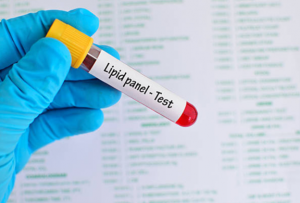A Convenient and Quantitative Strategy to Improve Lipidomic Analyses

Tech ID
23-028
Inventors
Philip Britz-McKibbin
Ritchie Ly
Patent Status
US provisional filed
Development Status
Proof of principle data available
Contact
Amy Hector
Business Development Manager
Abstract
Lipid homeostasis has long been associated with inflammation and the etiology of various cardiometabolic disorders, ranging from obesity, type 2 diabetes, cardiovascular and neurodegenerative diseases. As a result, there has been expanding interest in developing mass spectrometry (MS) based methods for untargeted lipid profiling as a hypothesis-generating approach for gaining new insights into disease mechanisms. Orthogonal separation techniques coupled to high-resolution MS are required for characterization of the human lipidome given its inherent chemical and structural complexity. Although various chromatographic and ion mobility methods are used to resolve diverse lipid molecular species, electrophoretic separations remain largely unrecognized in contemporary lipidomics.
A team of researchers from McMaster has introduced a novel two-step derivatization strategy as a safer alternative which enables the rapid analysis of cationic phospholipids by multisegment injection-nonaqueous capillary electrophoresis-mass spectrometry (MSI-NACE-MS) [1]. This strategy allows for the rapid determination of zwitter-ionic phospholipids using mutiplexed separations for large-scale lipidomic studies. The derivatization procedure is also useful to improve the resolution and detection of polar lipids by direct infusion-, ion mobility-, and liquid chromatography-MS.
Applications
- This is a practical method for quantitative methylation of phospholipids from blood specimens and other biological samples as compared to the hazards of diazomethane.
- The derivatization procedure improves the resolution and detectability of zwitter-ionic and polar lipid classes when using reversed-phase LC-MS and MSI-NACE-MS.
Advantages
- In this protocol, isobaric interferences and ion suppression effects were minimized when analyzing methylated phospholipids from blood extracts.
- This approach improves resolution, greater sensitivity and higher throughput (~ 3.5 min/sample) by MSI-NACE-MS.
- This method expands lipidome coverage while using inexpensive reagents without the safety concerns of diazomethane.
References:
- Ly, R. et al. (2023). Expanding Lipidomic Coverage in Multisegment Injection-Nonaqueous Capillary Electrophoresis-Mass Spectrometry via a Convenient and Quantitative Methylation Strategy. ChemRxiv doi: 10.26434/chemrxiv-2023-0x35f-v2.
Image obtained from: https://www.istockphoto.com/photo/lipid-panel-test-gm585316826-100375023?phrase=lipid+testing

